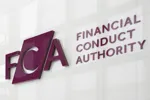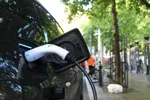The value of the UK car body repair market has fallen by 34% the years 2004 to 2014.
This is the estimate (after inflation) by automotive research firm Trend Tracker in its latest report, The Future of the Car Body Repair Market in the UK 2015-2020.
In the report Trend Tracker says the volume demand for repairs peaked at 5.81 million in 2006, but has since fallen steadily to an estimated 4.20 million repairs in 2014 – a decline of 28%. Overall repair volume was 24% lower in 2014 than in 2004.
Trend Tracker says the decline in the market for car body repairs cannot all be laid at the door of the 2008/2009 recession and its aftermath.
The insurance claims rate fell from 2000 to 2011, although it is estimated to have turned up recently.
The fall in the claims rate is partly explained by motorists driving less – average mileage having fallen by 15% since 2000. Another contributory factor is the fitment of ABS brakes to all new cars sold since 2007.
The recession also took its toll.
Plummeting new car sales aged the car parc, and accelerated the decline in the number of cars under four years old, which are the most likely to be repaired after an accident. Used car sales fell by 13% in the period 2004-2012, and that drove down demand for refurbishment.
Meanwhile, average repair costs in current prices rose from £932 in 2004 to £1,119 in 2014 (excluding VAT), but in real terms, after inflation as measured by the Retail Prices Index, they are estimated to have fallen by 13% in the past decade.
Trend Tracker attributes the fall in real-terms average repair costs to a decline in the number of relatively large and expensive insurance-funded repairs to private cars, and repairs to fleet and company cars.
It expects average repair costs to increase gradually, so that with a 2% increase in repair volumes, 2014/2020, the value of the UK car body repair market will rise 5% from 2014 to 2020 in real terms.
Recent re-growth in the new car market is already rebuilding the car parc up to four years old.
A more buoyant used car market will also boost dealer demand for refurbishment of used cars, although SMART repairers are making substantial inroads into the refurbishment market at the expense of traditional bodyshops.
The number of primary bodyshops operating in the UK car body repair market is forecast to decline by 9% between 2014 and 2020.
That will be a much slower rate of decline than the 19% seen between 2007 and 2013.
With improving prospects for car body repairs but a continuing decline in bodyshop numbers, Trend Tracker expects an 11% overall deficit in car body repair capacity by 2020, in contrast with the near-50% excess capacity in the sector 16 years earlier in 2004. However, any shortfalls will be seasonal and local, and insufficient to encourage regrowth in the number of repairers.
Trend Tracker director and lead body repair sector analyst Chris Oakham said: “The outlook for bodyshops is highly dependent on a continuing recovery in the UK economy, reviving demand for new and used cars, and giving motorists back more spare cash for elective repairs.
“But the increase in safety features such as lane departure warning, adaptive cruise control and emergency brake assist in new cars is likely to reduce the frequency of accidents in normal conditions as ABS has done in the past, while the congestion now endemic in urban traffic will reduce the severity of the average collision, along with the average value of collision repairs.”
> 'The Future of the Car Body Repair Market in the UK, 2015-2020' is produced for vehicle manufacturers, insurers, investors, advisers, operators, suppliers and others who need to understand the risks and opportunities facing each of the key protagonists in a punishingly competitive market.
It costs £1,495 (ex VAT), for a printed report, pdf and Powerpoint executive summary. For more information: 0870 421 4350 or email coakham@trendtracker.co.uk.



















Login to comment
Comments
No comments have been made yet.